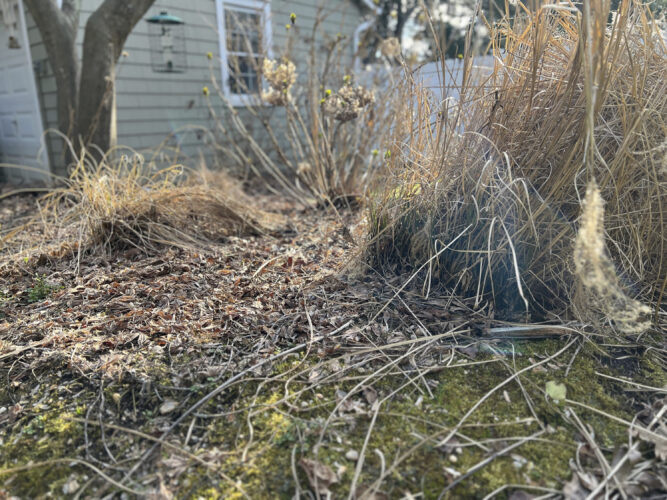On March 18, 2024, this photograph from Jessica Damiano displays a heap of uprooted weeds in a garden located in Glen Head, New York. Damiano advises the timely removal of weeds while they are still young to prevent their roots from establishing firmly. (Jessica Damiano via AP)
As our gardens witness the rejuvenation of trees, shrubs, perennials, and insects, we also emerge from a springtime dormancy, taking a break from yard work.
Get ready for action, garden enthusiasts.
Start by conducting a safety check in the garden. Have any tree branches broken off during winter storms? Are there any dangling or damaged branches? This is the perfect time to eliminate them, along with any dead wood. Use a sharp pruning saw to make precise cuts at an angle, just outside the branch collar (the swollen area where the branch meets the trunk).
For reachable damage, you can handle it yourself. However, for higher branches beyond your reach, it’s advisable to seek assistance from a professional arborist.
Trim shrubs as well, except for those that bloom in spring. These should be pruned right after their flowers have withered.

In this image dated March 18, 2024, provided by Jessica Damiano, fallen leaves and plant debris blanket the soil in a garden bed situated in Glen Head, New York. Damiano suggests delaying the spring garden cleanup until overnight temperatures have consistently stayed above 50 degrees for a minimum of one week. (Jessica Damiano via AP)
Exercise Patience Before Tidying Garden Beds
While the temptation to tidy up is strong, hold off on applying mulch to garden beds until the soil has warmed adequately. Applying mulch prematurely could trap cold temperatures in the soil, hindering root growth. Instead, wait to mulch until it’s time to plant tomatoes in your area. In my New York garden, this typically means waiting until late May, despite the early mulching frenzy among local landscapers in March.
Subsequently, only after nighttime temperatures have stayed above 50 degrees consistently for a week, trim back last year’s spent perennials and ornamental grasses to make room for new growth. This timing aligns with the emergence of many beneficial insects and pollinators, which respond to weather cues rather than the calendar.
While experts may differ on the precise timing due to varying species emergence temperatures, this approach strikes a balance by safeguarding numerous insects while allowing you to maintain garden aesthetics and productivity.
Lawn Care
Inspect your lawn for bare patches. Seed these areas weekly and water them twice daily until new growth matches the existing turf height. Ensure the seeds remain moist throughout; otherwise, you might need to start over. Once the young blades reach 3 inches in height, you can mow the newly seeded areas.
Remove weeds promptly when they appear, as their roots are easier to extract at this stage. Additionally, refrain from walking on wet soil to prevent compaction and structural harm that can be challenging to rectify.
Flower Maintenance
After flowering bulbs have faded, apply a balanced fertilizer like a 10-10-10 product. Avoid removing leaves until they turn yellow, as the plants rely on them to generate energy for the following year’s bloom.
Lastly, provide established perennials with a fertilizer boost (such as fish emulsion) as they awaken. New plantings benefit from six weeks of growth before the onset of summer heat.
If you reside in regions prone to spring frosts, postpone planting annuals until the risk has passed.
While there may always be more tasks to tackle in the garden, addressing these essential duties will set you on the right path for the upcoming growing season.
